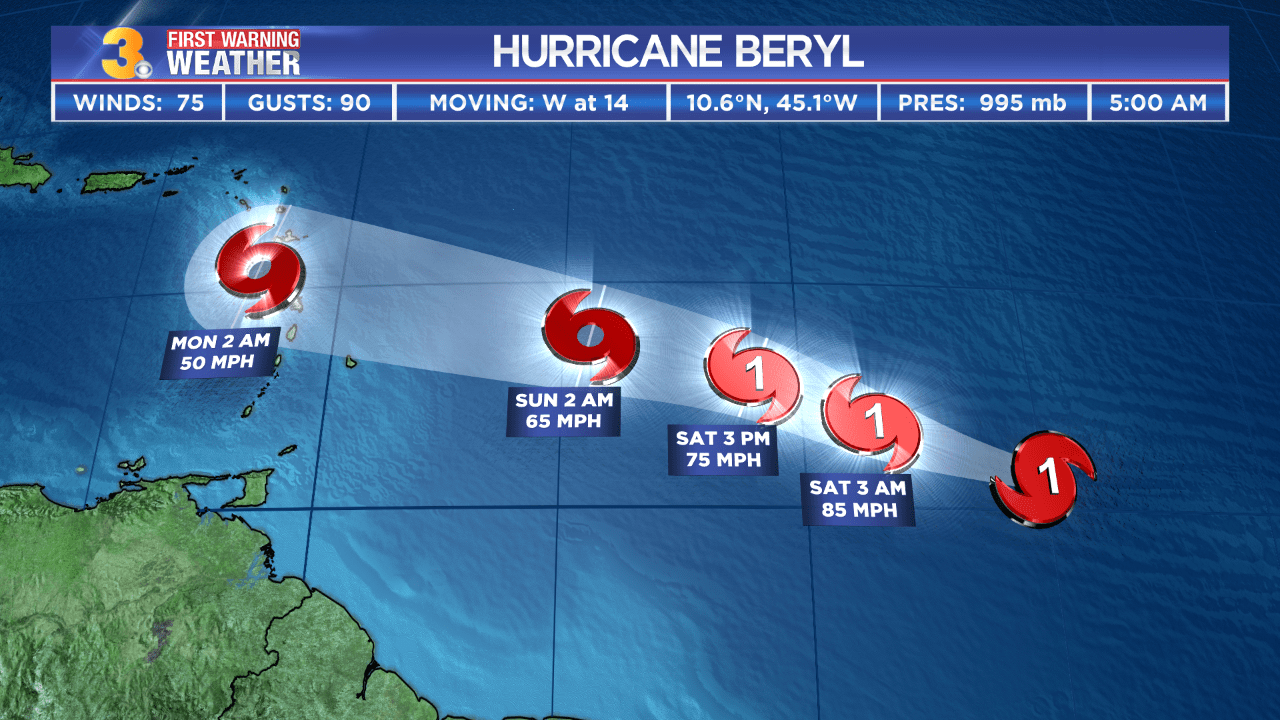Historical Impact of Hurricane Beryl

Barbados hurricane beryl – Hurricane Beryl was a powerful and destructive hurricane that made landfall on the island of Barbados on August 18, 2018. The hurricane brought with it strong winds, heavy rainfall, and storm surges that caused widespread damage across the island.
Barbados Hurricane Beryl mih wah storm dat pass through di Windward Islands and reach Barbados. Di hurricane cause flooding and damage to property, and it also left thousands of people without power. Barbados Hurricane Beryl is a reminder of the importance of being prepared for natural disasters.
The hurricane caused an estimated $100 million in damage to infrastructure, homes, and businesses. The agricultural sector was also heavily impacted, with crops and livestock being destroyed. The hurricane also caused power outages and water shortages that lasted for several days.
Barbados brace fuh Hurricane Beryl, weh a track close to de island. Fu’ mo’ info ‘pon de storm path, check out de hurricane beryl spaghetti models. Dem models show de possible paths dat de storm could tek, so yuh can stay informed ‘bout de latest developments.
Economic Consequences
- The hurricane caused an estimated $100 million in damage to infrastructure, homes, and businesses.
- The agricultural sector was also heavily impacted, with crops and livestock being destroyed.
- The hurricane also caused power outages and water shortages that lasted for several days.
Social Consequences
- The hurricane caused widespread displacement, with thousands of people losing their homes.
- The hurricane also caused disruptions to education and healthcare services.
- The hurricane had a significant impact on the mental health of the population, with many people experiencing anxiety, depression, and post-traumatic stress disorder.
Preparedness and Response to Hurricane Beryl
In anticipation of Hurricane Beryl, Barbados implemented comprehensive preparedness measures. These measures included:
- Activating the National Emergency Operations Center (NEOC) to coordinate response efforts.
- Issuing hurricane warnings and evacuation orders for vulnerable areas.
- Securing critical infrastructure, such as power lines and communication systems.
- Distributing emergency supplies, including food, water, and medical kits.
- Deploying emergency personnel, including police, firefighters, and medical teams.
The effectiveness of the emergency response plan was largely attributed to the following factors:
- Early activation of the NEOC, which ensured timely coordination of response efforts.
- Effective communication and public outreach, which kept the population informed and advised on necessary actions.
- Rapid deployment of emergency personnel, which allowed for swift assistance to affected areas.
- Strong community involvement, which fostered cooperation and support during the response.
Lessons Learned and Recommendations for Future Preparedness
Hurricane Beryl highlighted the importance of comprehensive preparedness and response plans. Lessons learned from the hurricane include:
- The need for continuous improvement and updating of emergency plans.
- The importance of investing in early warning systems and communication infrastructure.
- The value of community engagement and partnerships in disaster preparedness.
Based on these lessons, recommendations for future preparedness include:
- Conducting regular drills and exercises to test and refine emergency plans.
- Expanding early warning systems to cover a wider range of potential hazards.
- Enhancing community resilience through education, outreach, and capacity building.
- Investing in disaster risk reduction measures, such as infrastructure improvements and land use planning.
By implementing these recommendations, Barbados can strengthen its preparedness and response capabilities, ensuring a more effective response to future hurricanes and other disasters.
Recovery and Reconstruction after Hurricane Beryl: Barbados Hurricane Beryl

Following the devastation caused by Hurricane Beryl, a comprehensive recovery and reconstruction process was initiated to restore affected areas and communities.
The recovery efforts involved a multifaceted approach, including infrastructure repairs, housing assistance, and community revitalization initiatives. Challenges were encountered during the process, but through collaboration and resilience, significant progress was made.
Infrastructure Repairs, Barbados hurricane beryl
Hurricane Beryl caused widespread damage to infrastructure, including roads, bridges, and utilities. Recovery efforts prioritized the restoration of essential services, such as electricity, water, and transportation.
- Roads and bridges were repaired and reconstructed to ensure safe and efficient movement of people and goods.
- Power lines and utility systems were restored, providing essential services to affected communities.
- Communication networks were re-established, facilitating communication and coordination.
Housing Assistance
Hurricane Beryl left many homes damaged or destroyed, displacing residents. Recovery efforts focused on providing temporary shelter and long-term housing solutions.
- Emergency shelters were established to provide immediate refuge for displaced individuals.
- Government and non-profit organizations collaborated to provide financial assistance and building materials for home repairs and reconstruction.
- Affordable housing programs were implemented to assist low-income families and individuals in securing permanent housing.
Community Revitalization
Hurricane Beryl not only impacted infrastructure and housing but also disrupted community life. Recovery efforts aimed to revitalize affected communities and restore a sense of normalcy.
- Schools, hospitals, and community centers were repaired and reopened, providing essential services and fostering a sense of community.
- Public spaces, such as parks and playgrounds, were restored, offering recreational opportunities and promoting social cohesion.
- Economic development initiatives were launched to stimulate job creation and revitalize local businesses.